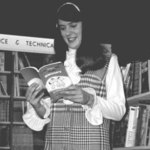Interviewer: Cally Whitman, Loni McKlevie and Laura Tanner
Interview Date: February 27, 2012
Location: University Housing and Dining Services offices, Oregon State University
Duration: 2:25:35
In this interview, Tower discusses her family life, her experiences at Oregon State University during the 1960s, and her accomplishments over the years as an employee of the university. She begins by describing how her parents met in the Salem, Oregon airport and then recalling her active life during high school. During these years, Tower was popular and participated in several sports and extracurricular activities, including cheerleading, student government, volleyball, basketball, and softball. She goes on to talk about the family dynamic in her home growing up: her parents’ personalities, her relationship with her parents and brothers, and her religious upbringing. After finishing her bachelor's and master’s degrees at OSU and Portland State University respectively, she married and became a farm wife, although that meant giving up her chance to travel to Uganda with the Peace Corps. Five years into an unhappy marriage, she divorced her husband and travelled to Indonesia, where she stayed for three years. She never remarried.
From there, Tower discusses her life as a student at Oregon State University during the 1960s. She describes her residence hall, her role as an ASOSU senator, and her decision to change her major several times. She recalls a few of the rules women on campus had to follow, such as having a curfew, not being allowed to wear pants, and needing permission to have a male guest in their dorm room. Tower then notes that many students disregarded these rules because their importance paled in comparison to the civil rights, anti-war, and women’s rights movements. She admits that it was hard to focus on school amidst the turmoil that defined the era. One prominent local example that Tower discusses was the Fred Milton controversy at OSU and the walk-out that arose in response. She then returns to the subject of her divorce and talks about how the women’s movement in the 1970s helped guide her toward the decision to end her marriage.
The theme of the interview then switches to Tower’s many accomplishments as an employee at OSU. She helped create the International Living Learning Center and was responsible for naming a new residence hall after Carrie Halsell, the first African American student to graduate from OSU. The interview concludes with Tower showing the interviewers her college scrapbook as she recalls memories of student government, the cost of tuition in the 1960s, famous entertainers who performed at the university, registering for classes, the dining halls, and meeting Fred Milton.
Dublin Core
Title
Description
From there, Tower discusses her life as a student at Oregon State University during the 1960s. She describes her residence hall, her role as an ASOSU senator, and her decision to change her major several times. She recalls a few of the rules women on campus had to follow, such as having a curfew, not being allowed to wear pants, and needing permission to have a male guest in their dorm room. Tower then notes that many students disregarded these rules because their importance paled in comparison to the civil rights, anti-war, and women’s rights movements. She admits that it was hard to focus on school amidst the turmoil that defined the era. One prominent local example that Tower discusses was the Fred Milton controversy at OSU and the walk-out that arose in response. She then returns to the subject of her divorce and talks about how the women’s movement in the 1970s helped guide her toward the decision to end her marriage.
The theme of the interview then switches to Tower’s many accomplishments as an employee at OSU. She helped create the International Living Learning Center and was responsible for naming a new residence hall after Carrie Halsell, the first African American student to graduate from OSU. The interview concludes with Tower showing the interviewers her college scrapbook as she recalls memories of student government, the cost of tuition in the 1960s, famous entertainers who performed at the university, registering for classes, the dining halls, and meeting Fred Milton.

